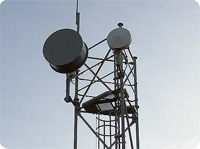Difference Between FDMA and TDMA
 Without the use of multiplexing technologies, it would be very difficult for telecommunications companies to provide the level of service that they have at the same cost. It just comes down to how many subscribers they can serve at the same time with the same amount of infrastructure deployed. FDMA and TDMA are two pre-3G technologies that have been utilized to improve the performance of the 2G network.
Without the use of multiplexing technologies, it would be very difficult for telecommunications companies to provide the level of service that they have at the same cost. It just comes down to how many subscribers they can serve at the same time with the same amount of infrastructure deployed. FDMA and TDMA are two pre-3G technologies that have been utilized to improve the performance of the 2G network.
FDMA or Frequency Division Multiplexing Access is a method of dividing a single band into 30 discrete channels. Each channel would then be capable of handling separate traffic, whether it’s a call or a data transfer. This is a higher level of multiplexing and should not be confused with FDM (Frequency Division Multiplexing) which is a low level multiplexing process and occurs on the physical layer. To achieve its purpose, FDMA hardware includes high performance filters that also aid it in avoiding near-far problems which can deteriorate the call quality.
Time Division Multiplexing Access or TDMA is the second form of high level multiplexing that also allows more subscribers to use the same frequency band. TDMA divides a single channel into 3 discrete time partitions. Each time partition is only for a few milliseconds at a time, therefore each channel is sending data in a round robin fashion. In order to ensure that the data is properly synchronized, each time packet contains data in between 2 guard periods. The processes of TDMA are a little bit more difficult to implement due to the timing required so that the data packets are distinguishable. It also requires a little bit more overhead in synchronization due to the multiple packets that need to be put back together in order to form a single signal.
FDMA and TDMA are not mutually exclusive processes though; they can be used in tandem to squeeze even more channels into a single frequency band. Implementing both multiplexing technologies might cost more than if you would just implement one. It would still be so much less than if you would expand your capacity by setting up more radio towers. Even though these are 2G technologies, and 2G technologies are now slowly giving way to the more advanced and so much faster 3G technologies, the processes of multiplexing would still be present in the years to come. The economic benefit that they provide the telecommunications companies would ensure that in one form or another, multiplexing would be implemented.
- Difference Between Sony Cybershot S Series and W Series - December 22, 2012
- Difference Between Samsung Galaxy S3 and iPhone 5 - December 21, 2012
- Difference Between Samsung Galaxy S2 (Galaxy S II) and Galaxy S 4G - December 20, 2012

we have kenwood UHF repeater and hand held radio. Now we want to use Motorola radio with GPS service. Can we use both radio? If not, what shall we do? Please give me suggestion.